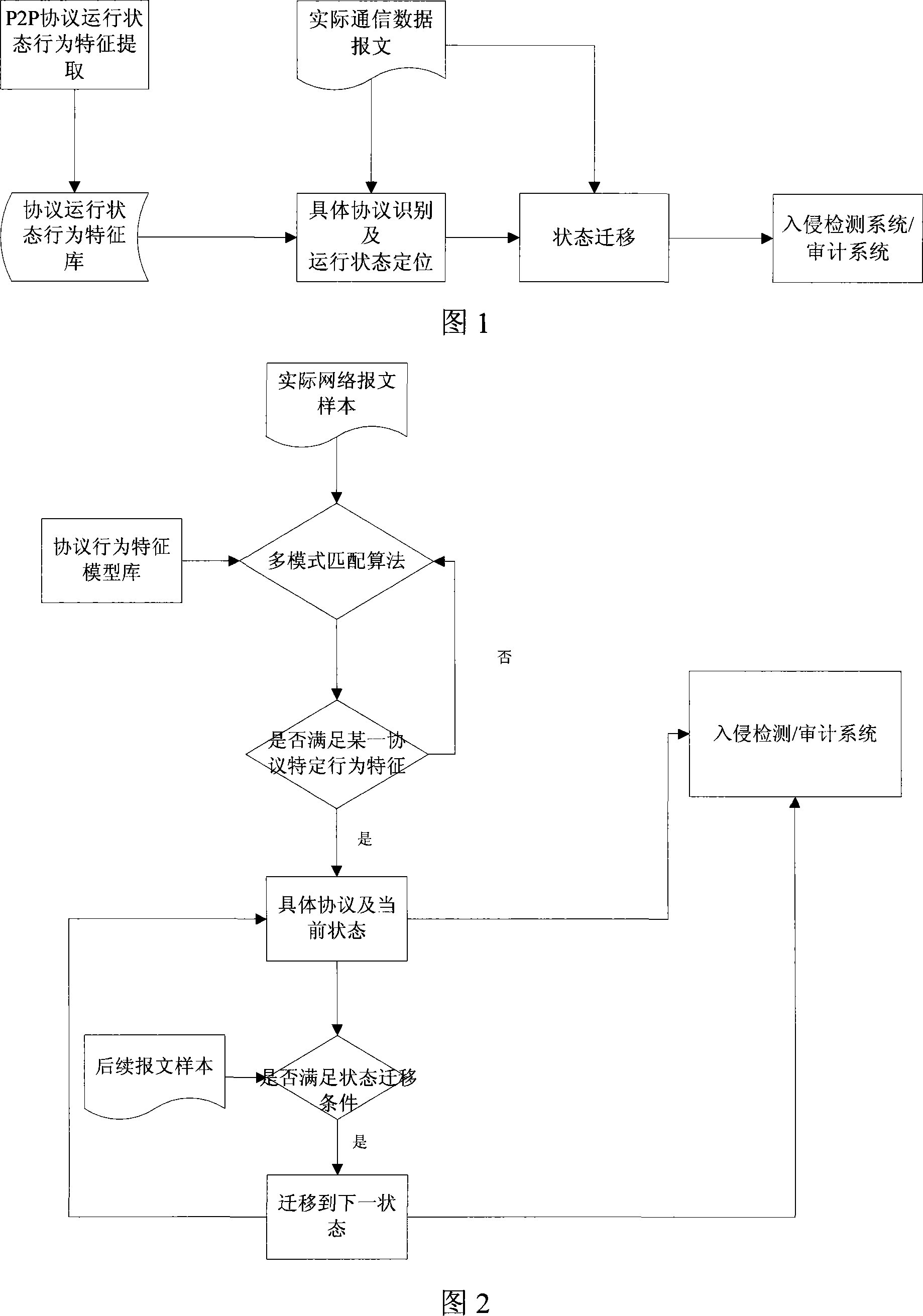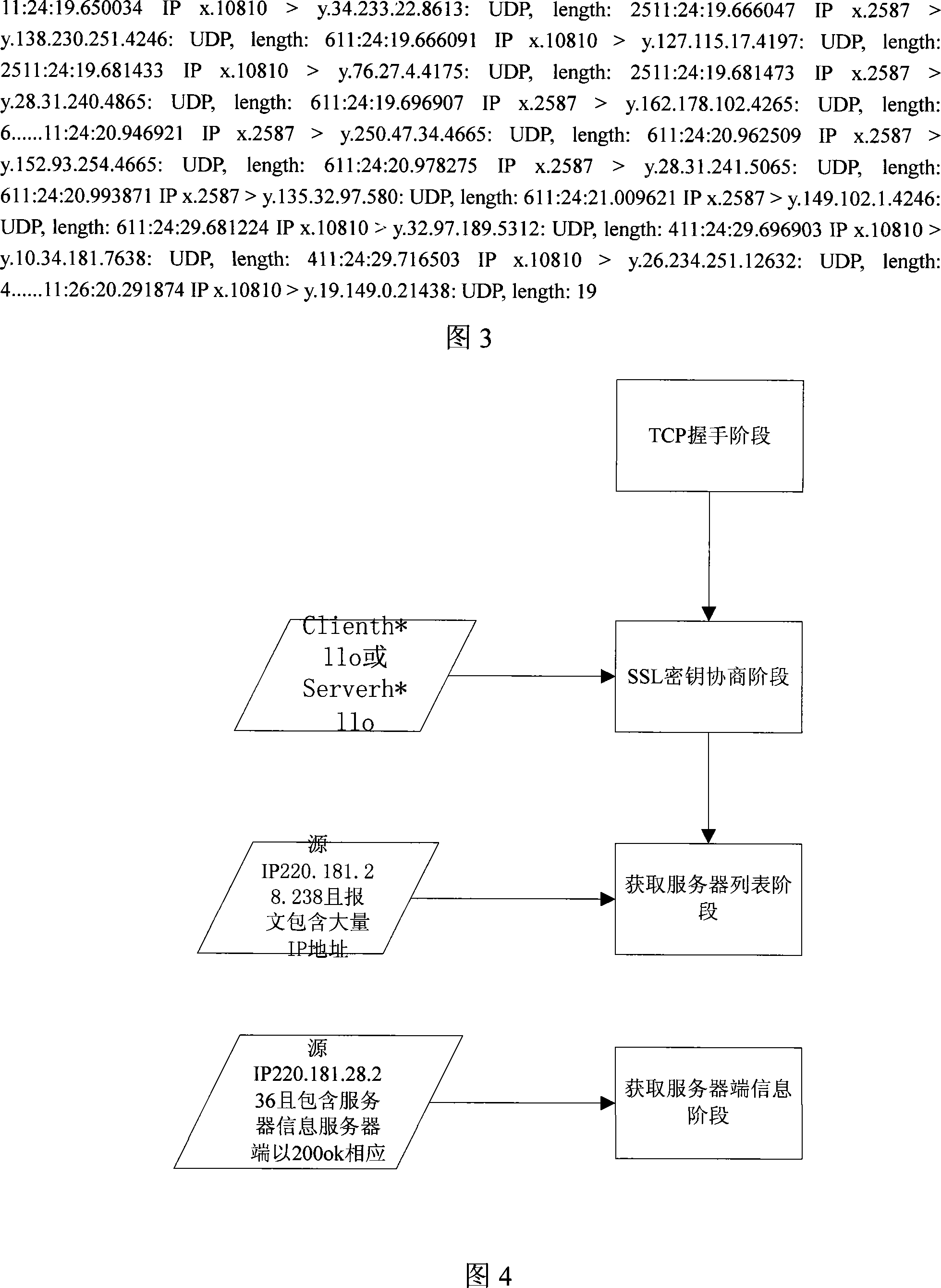Method and system of accurate recognition in P2P protocol based on behavior characteristics
A recognition method and behavior technology, applied in the network field, can solve the problems of lack of precise recognition function, inaccurate matching and recognition, etc., and achieve the effect of simple and convenient expansion
- Summary
- Abstract
- Description
- Claims
- Application Information
AI Technical Summary
Problems solved by technology
Method used
Image
Examples
Embodiment 1
[0031] A method for accurately identifying P2P protocols based on behavioral characteristics, including:
[0032] The steps of establishing the protocol behavior characteristic model;
[0033] Steps for locating the specific operating status;
[0034] The steps of behavioral model state transition;
[0035] Steps of intrusion detection.
[0036] The steps in the establishment stage of the protocol behavior feature model mainly include the extraction of specific P2P application protocol behavior features and the establishment of a protocol operating state model;
[0037] The specific operation state positioning is mainly to judge the current protocol used by the P2P application through the transmission data or control message information obtained in the actual network communication process, and match it with the established behavior model to determine the current state of the protocol operation;
[0038] In the behavior model state transition stage, judge the next step behav...
Embodiment 2
[0049] The protocol format anomaly detection process of the present invention mainly includes four working stages: the establishment of the protocol behavior characteristic model, the specific operation state location, the state transition of the behavior model, and the detection. The steps of each stage are as follows (see Figure 1):
[0050] The establishment phase of the protocol behavior characteristic model:
[0051] Combining the existing port location and mining the behavior characteristics of a certain step in the specific P2P operation process of the data message, this stage includes all the control information of the P2P operation, the port used, and the characteristics contained in the specific data message (such as specific field lengths, etc.).
[0052] Edonkey2000's P2P software behavior feature extraction steps:
[0053] 1) Edonkey2000 uses a lot of 6-byte long UDP packets to send server status request packets (the client request server status step feature ind...
Embodiment 3
[0068] Embodiment 3: Netease popo login stage behavior characteristic state model establishment steps: (see figure 4)
[0069] 1) The client and the server perform a TCP handshake connection (usually 220.181.28.238: 443)
[0070] 2) Use the SSL protocol to negotiate the session key used in subsequent communications (the client sends a Clienth*llo to initiate a handshake. This message contains a list of algorithms that can be implemented by itself and other required messages, and the SSL server will respond A Serverh*llo, which determines the algorithm required for this communication, and then sends its own certificate (which contains its identity and its own public key). After receiving this message, the Client will generate a secret message, using SSL The server's public key is encrypted and transmitted, and the SSL server decrypts it with its own private key. The session key negotiation is successful, and the two parties can use the same session key to communicate.
[0071]...
PUM
 Login to View More
Login to View More Abstract
Description
Claims
Application Information
 Login to View More
Login to View More - R&D
- Intellectual Property
- Life Sciences
- Materials
- Tech Scout
- Unparalleled Data Quality
- Higher Quality Content
- 60% Fewer Hallucinations
Browse by: Latest US Patents, China's latest patents, Technical Efficacy Thesaurus, Application Domain, Technology Topic, Popular Technical Reports.
© 2025 PatSnap. All rights reserved.Legal|Privacy policy|Modern Slavery Act Transparency Statement|Sitemap|About US| Contact US: help@patsnap.com


